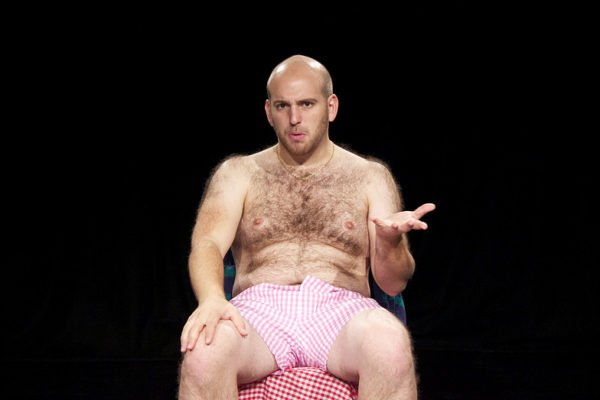
Bubble Schmeisis at Summerhall.
This morning I drank a cup of tea in the bath (I know how you like to read my most intimate revelations). I drank a cup of tea in the bath because I view consuming liquids whilst sitting in other liquids as the height of decadence. And I think I think this because when growing up my mother was always strident about policing the amount of water we used. When we were really little we’d share baths and when we got older any time when you got out of the tub and didn’t leave the bath water for another person to use was greeted with shrieks of anger. My stepfather would always – and probably still does – take baths in approximately three inches of water. So now, as an adult, when I submerge myself in water so high it floods the bathroom floor as I lower into it like a hippo into the mud, I feel a slight cackle rising in my throat as, somewhere in my brain, I know I’m not really meant to being doing this.
Our bathing rituals can reveal a lot about ourselves and the families we adopted (or rejected) them from. Nick Cassenbaum knows this and has rituals that seem even more fun than drinking UHT-milked tea in a hotel bathtub. In Bubble Schmeisis, he takes us through a trip to the Canning Town Schvitz, which is the only remaining authentic bathhouse in East London. The route he and three others take on the North Circular to get there becomes the basis for further stories from his earlier life. These stories include going on Federation of Zionist Youth trips to Israel, discovering not all boys are circumcised and having an answer to the question, “what is the matter with you Jews?” demanded of him when living south-of-the-river.
The cleverest thing about this show is that it’s by far the funniest thing I have seen in Edinburgh so far, and yet as you’re howling away at another anecdote Bubble Schmeisis is actually saying more about identity and different humans in shared city spaces than many shows that on the outside look Serious with stern faces and capital letters.
From decanting his Poppa Alan into the car and emerging fully schmeised, Cassenbaum depicts a whole way of North and East London Jewish life that unless you are a Jewish Londoner or close to people who are, it’s unlikely you know much about. Because for non-Jews, it’s surprising how much Jewishness can get deflated down into being either a school lesson about the holocaust or a political discussion about the actions of the Israeli government. The domestic side of life, the normal side of life in which you argue with parents and drink with friends, is often omitted. So Cassenbaum’s story about the changing yet interlinked lives of three generations of Jewish men, is so worth watching.
Aside from the Jewish theme, Bubble Schmeisis is also beautiful in its depiction of male friendship and shared routines. It takes seriously and reveals the intricacies of the ‘rules’ behind the rituals of going to White Hart Lane or when and how to take off your wrap in the Schvitz. At the end of the performance Cassenbaum offers to be the one to take any willing audience member on their first trip to the Schvitz and I’d like to say “yes, me please,” but I don’t believe he and I would be able to do so together – and there’s actually something particularly nice about the contrast between this very masculine space and the tender act of washing another person.
But despite this, I am thinking about the Schvitz as I sip tea in the hotel bath. And I’m wondering why my routines seem to come from deliberately going against what I was taught – there’s no shared history in my bathing, I think. Then I remember my granny who once let me make a bath with thirteen types of bubble bath in it – including the one from the bottle hidden under the frilly skirts of a doll – and I realise I’m not such a rebel after all. And then I get out of the bath and I leave the water in for the next person. After all, this isn’t the last days of Rome.

